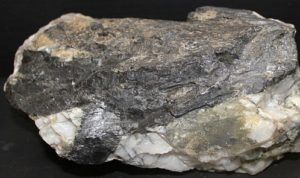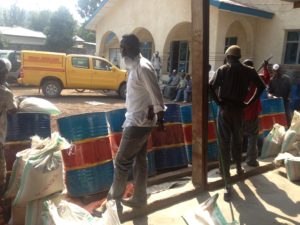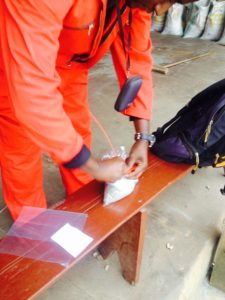WOLFRAMITE (Fe,Mn)WO4:
Is an iron manganese tungstate mineral that is the intermediate between ferberite (Fe2+ rich) and hübnerite (Mn2+ rich). Along with scheelite, the wolframite series are the most important tungsten ore minerals.  Wolframite is found in quartz veins and pegmatites associated with granitic intrusives. Associated minerals include cassiterite, scheelite, bismuth, quartz, pyrite, galena, sphalerite, and arsenopyrite.
Wolframite is found in quartz veins and pegmatites associated with granitic intrusives. Associated minerals include cassiterite, scheelite, bismuth, quartz, pyrite, galena, sphalerite, and arsenopyrite.
This mineral was historically found in Europe in Bohemia, Saxony, and Cornwall. China reportedly has the world’s largest supply of tungsten ore with about 60%. Other producers are Canada, Portugal, Russia, Australia, Thailand, South Korea, Bolivia, the United States, and the Democratic Republic of the Congo.

The name “wolframite” is derived from German “wolf rahm”, the name given to tungsten by Johan Gottschalk Wallerius in 1747. This, in turn, derives from “Lupi spuma”, the name Georg Agricola used for the element in 1546, which translates into English as “wolf’s froth” or “cream”.  The etymology is not entirely certain but seems to be a reference to the large amounts of tin consumed by the mineral during its extraction. Wolfram is the basis for the chemical symbol W for tungsten as a chemical element.
The etymology is not entirely certain but seems to be a reference to the large amounts of tin consumed by the mineral during its extraction. Wolfram is the basis for the chemical symbol W for tungsten as a chemical element.
Wolframite was highly valued as the main source of the metal tungsten, a strong and quite dense material with a high melting temperature used for electric filaments and armor-piercing ammunition, as well as hard tungsten carbide machine tools. In World War II, wolframite mines were a strategic asset, due to its use in munitions and tools.
Wolframite was considered to be a conflict mineral due to the unethical mining practices observed in the Democratic Republic of the Congo, during the congo wars.



